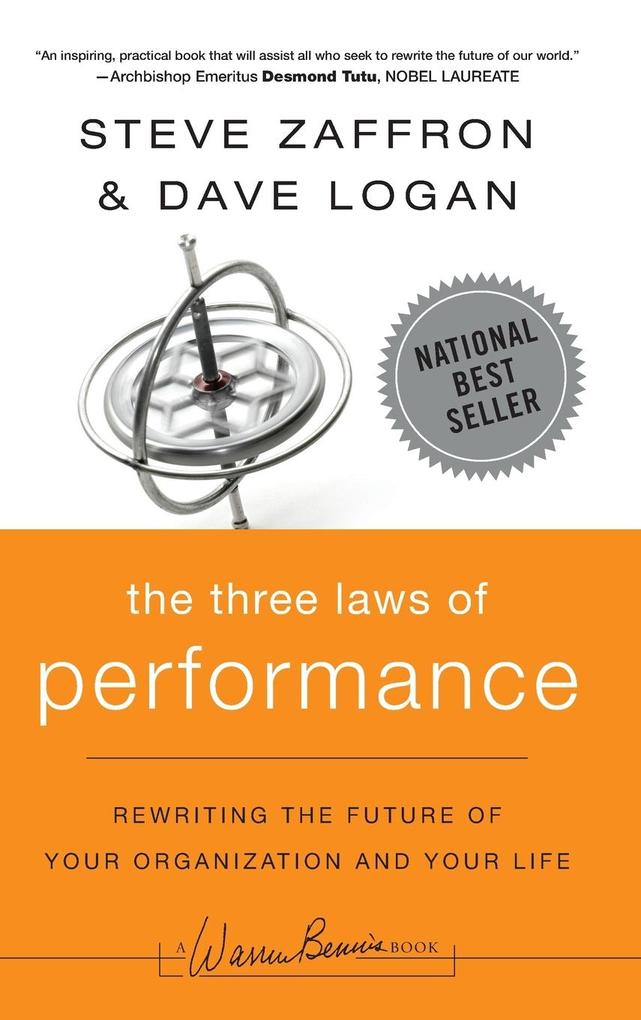
Zustellung: Fr, 18.07. - Mi, 23.07.
Versand in 2 Wochen
VersandkostenfreiBestellen & in Filiale abholen:
When something at work isn t going smoothly, managers struggle with what part of the problem to tackle first. Do they start with cost reduction? What about morale? Or should they go for process improvements first? They pick the problem to work on and, depending on whether their plan makes sense, one of two things happens.
When a hurricane warning is announced, everyone's concerns and actions become focused on that expectation; the hurricane essentially becomes the future which people are "living into." Similarly, when an organization needs to transform or make the leap to a higher level, everyone involved should be "living into" the vision of the organization's new, improved future. But in the majority of organizations, the future people are living into is based on past performance and experience, and so major transformation is almost impossible.
Steve Zaffron is, CEO of Vanto Group which has helped hundreds of companies envision and effectively implement major change and performance improvement. Zaffron and Dave Logan outline this proven system for rallying all of an organization's employees around a new vision, and more importantly, making it stick. Their focus is on making such transformations permanent and repeatable, providing practical examples from Vanto Group's clients such as Apple, Lockheed Martin, Reebok, BHP-Billiton, Johnson & Johnson, Morgan Stanley, and many others.
Steve Zaffron is, CEO of Vanto Group which has helped hundreds of companies envision and effectively implement major change and performance improvement. Zaffron and Dave Logan outline this proven system for rallying all of an organization's employees around a new vision, and more importantly, making it stick. Their focus is on making such transformations permanent and repeatable, providing practical examples from Vanto Group's clients such as Apple, Lockheed Martin, Reebok, BHP-Billiton, Johnson & Johnson, Morgan Stanley, and many others.
Inhaltsverzeichnis
Editor's Note, byWarren Bennis.
Foreword, by Michael C. Jensen.
Authors' Note.
Introduction: The Power of Rewriting the Future.
Part I: The Three Laws in Action.
1. Transforming an Impossible Situation.
2. Where Is the Key to Performance?
3. Rewriting a Future That's Already Written.
Part II: Rewriting the Future of Leadership.
4. With So Many Books on Leadership, Why Are There So Few Leaders?
5. The Self-Led Organization.
Part III: Mastering the Game of Performance.
6. Who orWhat Is Leading Your Life?
7. The Path to Mastery.
8. Breaking the Performance Barrier.
Appendix: The Three Laws of Performance and the Leadership Corollaries.
Notes.
Acknowledgments.
The Authors.
Index.
Foreword, by Michael C. Jensen.
Authors' Note.
Introduction: The Power of Rewriting the Future.
Part I: The Three Laws in Action.
1. Transforming an Impossible Situation.
2. Where Is the Key to Performance?
3. Rewriting a Future That's Already Written.
Part II: Rewriting the Future of Leadership.
4. With So Many Books on Leadership, Why Are There So Few Leaders?
5. The Self-Led Organization.
Part III: Mastering the Game of Performance.
6. Who orWhat Is Leading Your Life?
7. The Path to Mastery.
8. Breaking the Performance Barrier.
Appendix: The Three Laws of Performance and the Leadership Corollaries.
Notes.
Acknowledgments.
The Authors.
Index.
Produktdetails
Erscheinungsdatum
01. Februar 2009
Sprache
englisch
Seitenanzahl
256
Autor/Autorin
Steve Zaffron, Dave Logan
Verlag/Hersteller
Produktart
gebunden
Gewicht
531 g
Größe (L/B/H)
235/157/19 mm
ISBN
9780470195598
Entdecken Sie mehr
Pressestimmen
"The Three Laws of Performance provides a list of rules (and stories explaining how they work in practice) that promise to help individuals in leadership roles facilitate the group coherence and cohesion that are necessary to bring about transcendent performance. The book is based on a wealth of experience from decades of applying the ideas it explains. If you're interested in this kind of theory, the book is worth a read."
BrokenSymmetry.typepad.com
"This is a great book ... I think it is one of the best books I've read in the last few years. Grab this book soon as you can and enjoy!"
EricBrown.com
"Three Laws is about impossible transformations and how systemic change can remake your life or your organization."
Life Insurance Selling
BrokenSymmetry.typepad.com
"This is a great book ... I think it is one of the best books I've read in the last few years. Grab this book soon as you can and enjoy!"
EricBrown.com
"Three Laws is about impossible transformations and how systemic change can remake your life or your organization."
Life Insurance Selling
Bewertungen
0 Bewertungen
Es wurden noch keine Bewertungen abgegeben. Schreiben Sie die erste Bewertung zu "The Three Laws of Performance" und helfen Sie damit anderen bei der Kaufentscheidung.









